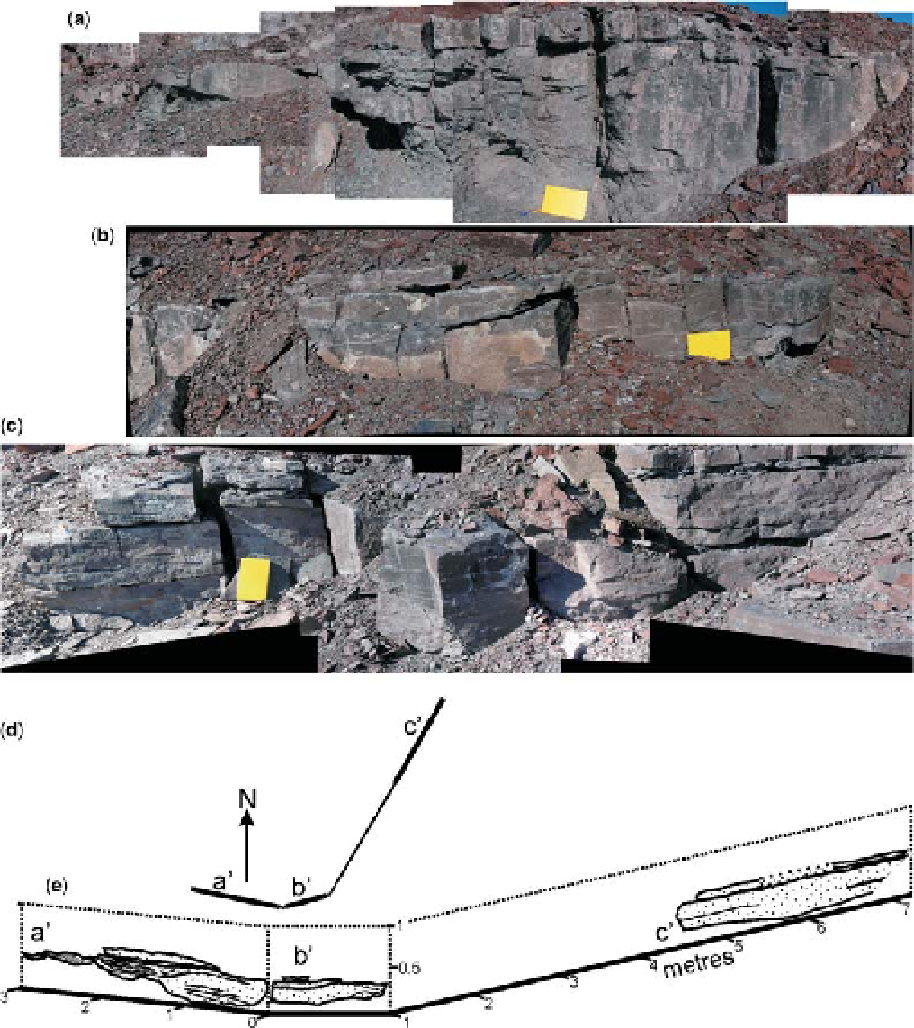Geoscience Reference
In-Depth Information
Fig. 9. The sandstone on the SE ridge of Stensi¨ Bjerg, Gauss Halvø that contained the in situ specimens of
Acanthostega: (a-c) compiled from digital photomontages using PTgui. (a) Channel sandstone from west side of ridge,
to 0128.(b) The same sandstone on the ridge and c. parallel to palaeoflow, to 3428.(c) The Acanthostega locality on the
eastern side of the ridge, to 3008 (compare fig. 13 from Blom et al. 2005). (d) The three sections shown in plan view.
(e) Isometric reconstruction of the three sections compiled from photomontages and video. This shows the SW-NE axis
of this minor channel. Inclined bedding was only recorded from the western side of (a) as shown in (d).
the tetrapods have largely been removed. However,
the following conclusions can be drawn.
It is a composite bed with the two storeys separated
by a mudstone that is bright red in colour. This is
a vertisol and represents a significant time gap.
The two storeys are therefore not part of a con-
tinuously migrating single river system. They
instead represent two separate and distinct flood
events along the same channel.
The sandstone is a minor sand body with a channel
form. It therefore differs somewhat from the
much larger flat-based Britta Dal Formation
sandstones.

